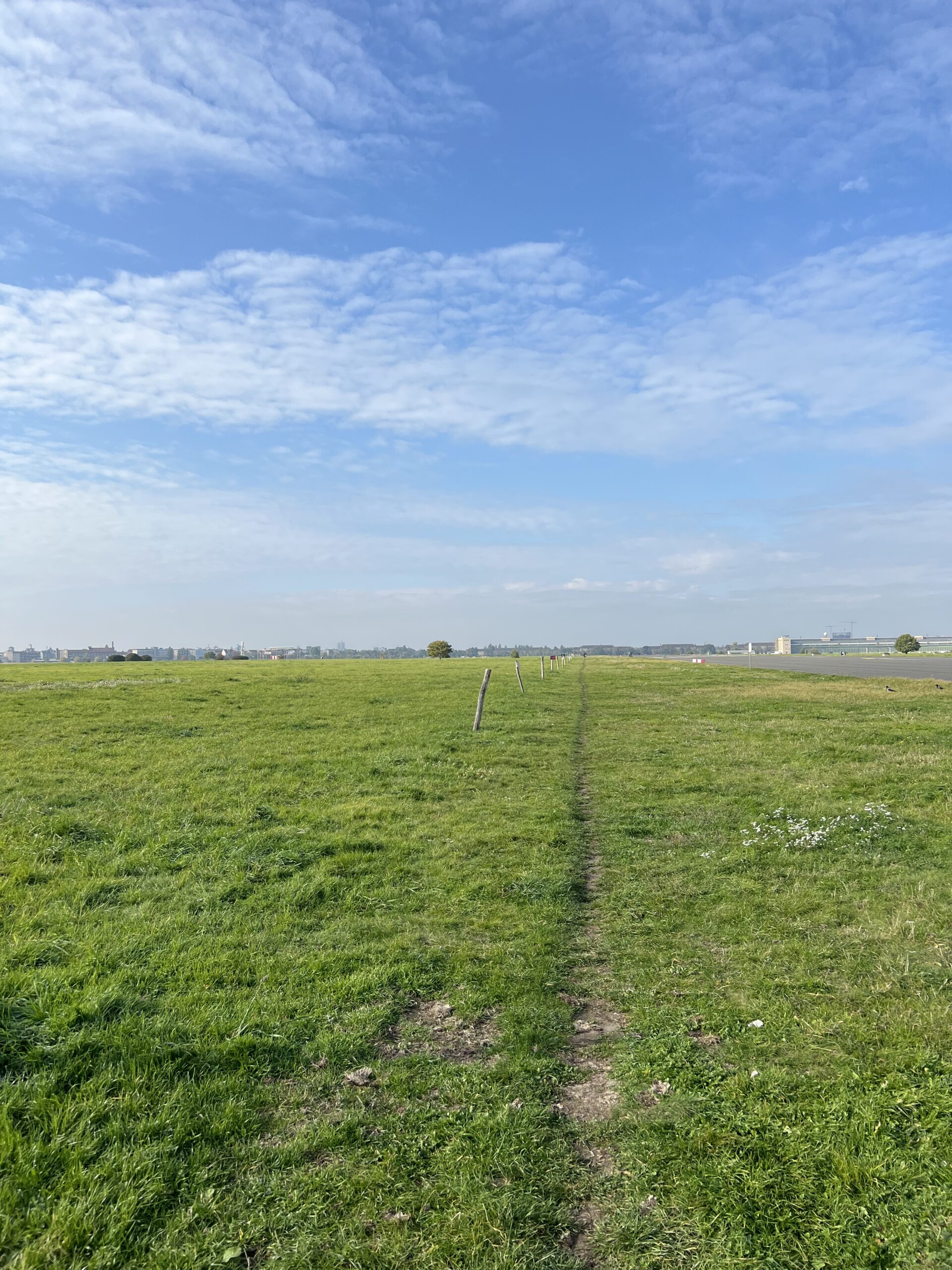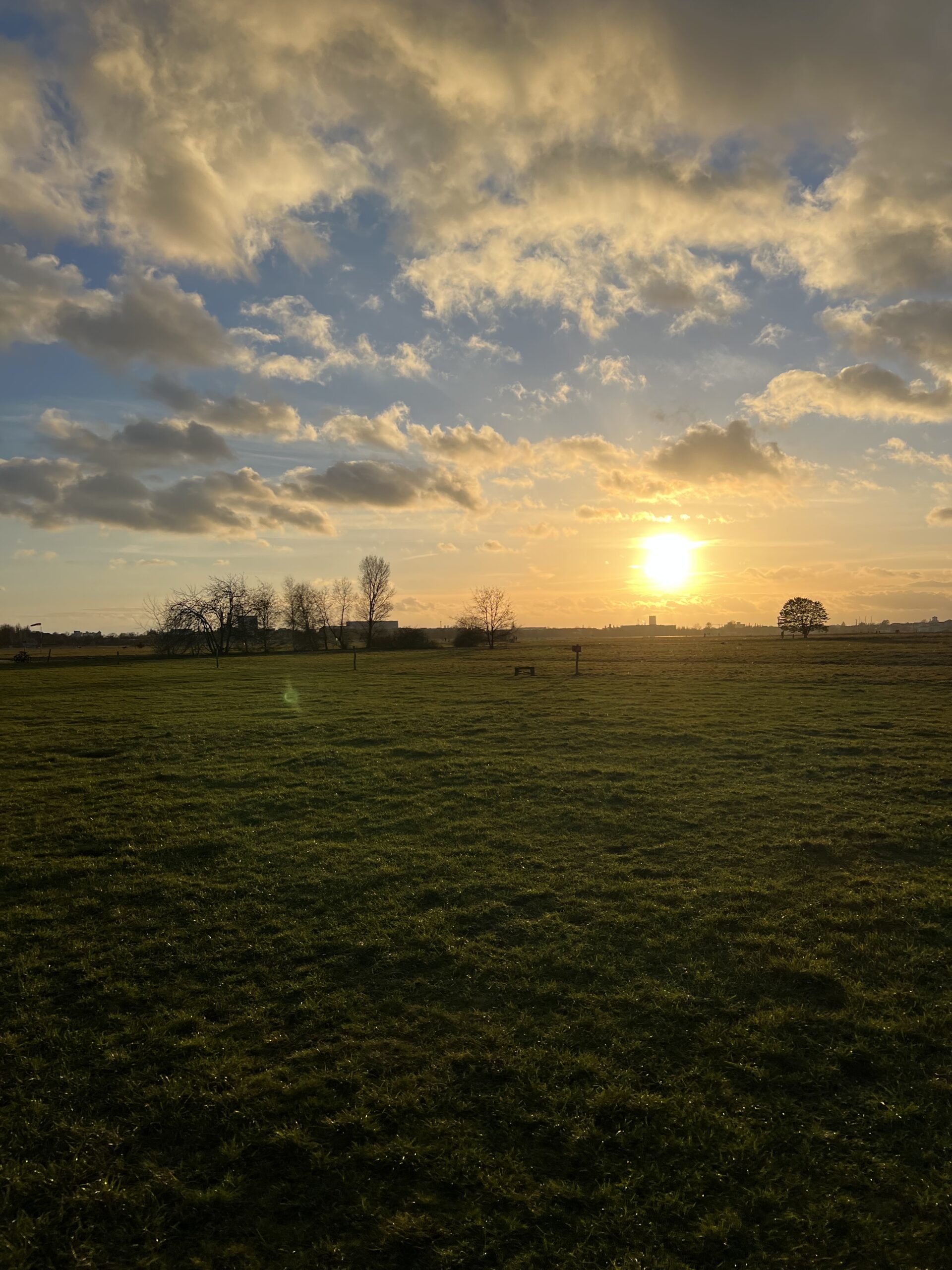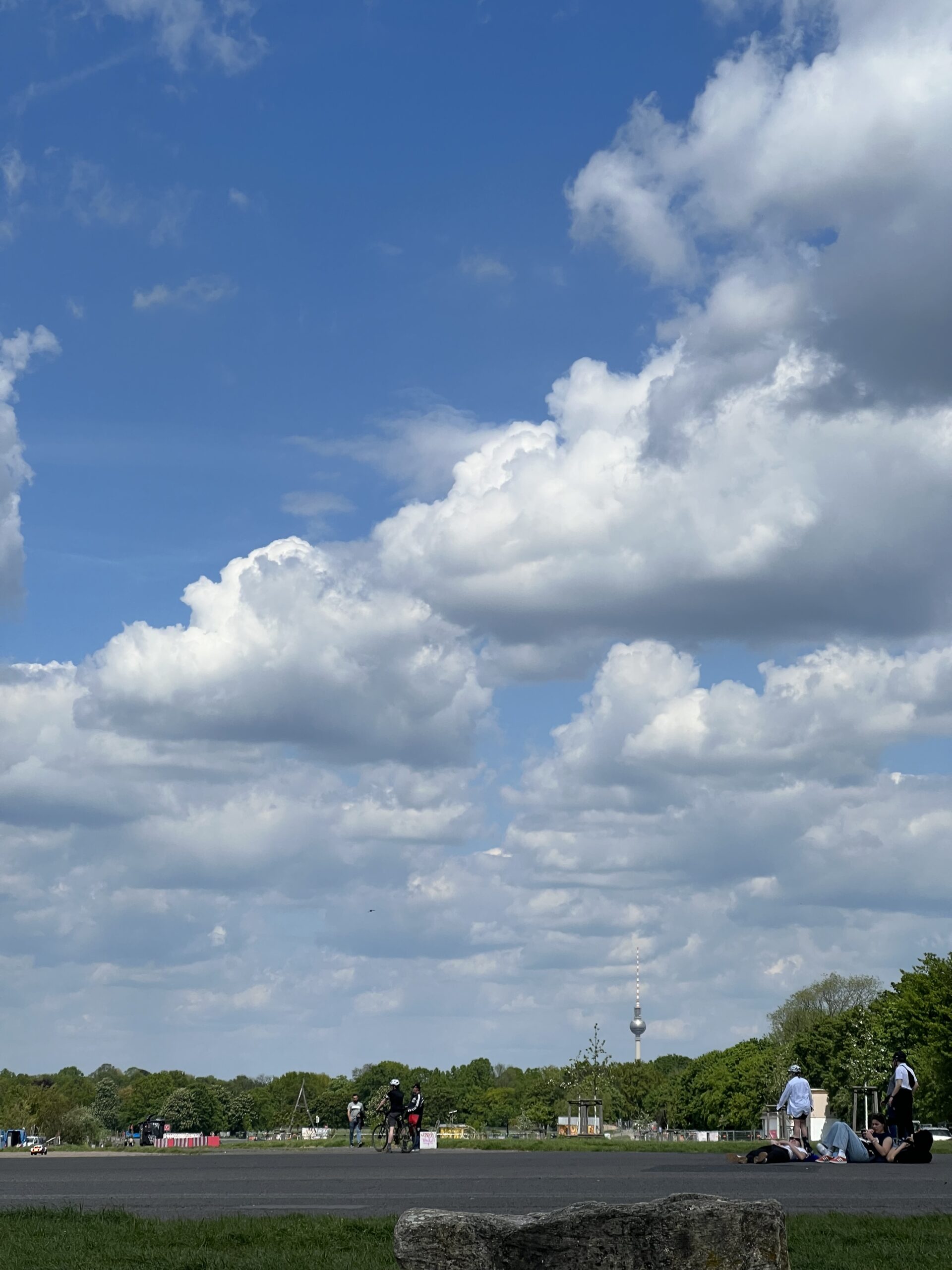The focus of my research was not on the plethora of environmental and scientific offerings of the space, of which there are many. The decision to avoid focusing on the many benefits of the Field to the city in terms of climate regulation and ecological services allowed me to focus more on the original research question’s inquiry into Berliners’ personal meaning and connection to the space.
Rather than enumerating the ecosystem services of the Field, environmental values center around what environmental characteristics and services of the space contribute to how people felt using the space and what it meant to them more broadly. This centered particularly around the scale, the unique openness, and certain ecosystem services.
One of the primary notes of both interviewees and other sources in relation to the character of the field was its contrast to surroundings.
“On entering the area, the first thing you get is an impressive feeling of size, space and openness. This is the first impression that shapes the perceived image and sticks in the mind. The expanse and openness – in the middle of the built-up city – gives visitors a very direct experience of nature, wind and weather, a radical change of location in the immediate living environment.“1



The size of the site and its different terrain areas, both existing built areas like tarmac or natural space like the central grassy meadow enable a variety of different uses. Everyone has enough space to find their niche.2 What became most apparent was the interplay between environmental characteristics of the site and usages/users. As noted before, Kristin Hensel remarked on the interdependent relationship of the space and the mindset of recreators. It’s very special, she said, both “because of the vastness, then also because it’s an unused area..so it’s just open space that can be designed”.3 The openness allows for freedom to build an alternative use area, and “if there was no Tempelhofer Feld, there would also be no Allmende, no community garden like the Allmende-Kontor”.4
But it’s not a one way street, “we’ve also shaped the field, because we’re very present there and offer a lot of green and a lot of shade and recreation on this fallow land without trees”, says Kristen.5 Allmende-Kontor (AK) has shaped the field as the field has shaped them, so “many people don’t just associate the field with the garden, also sort of the garden users,” Kristin says.6
Thus, an interdependence of the environment and activity creates a bond between the physical space and the community of people using it—both longstanding users and single-day visitors.
Returning to the idea of environmental uniqueness, “no greater contrast is conceivable than coming from Berlin to Tempelhofer Feld,” said Friedrich Naumann in 1897; “nowhere else in Germany is there a similar sight. The women and children wander out of the stone streets and lie down on the steppe….There are thousands of them sitting on the ground between Rixdorf and Schöneberg on beautiful days”.7
“Nowhere else in Germany is there a similar sight.”
Friedrich naumann, 1897
This is one aspect of the field that Juan adamantly shared gratitude for. In Berlin it’s, “always buildings, buildings, and then suddenly you are in this open space”.8 The vastness of the space and the open terrain is key to enabling such diverse uses, both ecological services and social uses. Berlin is encircled by rural Brandenburg, occupied by much agricultural use and less developed landscape. Its natural offerings are often seen as an escape from the city, much like Tempelhof Field, which people expressed valuing. Kristin specifically appreciated the possibility to connect with the characteristics of more rural natural spaces in the center of Berlin, making it “possible to have the feeling of country, nature, and freedom in the middle of the city”.9
The inner meadow ring, the innermost grassy sections cross divided by tarmac lanes and the outer grassy areas, serve diverse purposes of nature conservation. Kristin named this “inner area, which serves nature conservation, the birds or even this dry grassland”, as a specific function and meaningful facet for both her and the gardeners, as well as many visitors.10
“What is incredibly impressive is that in such a huge metropolis in Berlin, a habitat is created on a field like this…which is very valuable in terms of nature conservation”.11 Not just conservation of ecosystem benefits to the city, but instances of conservation that involve volunteers and bring citizens closer to efforts themselves, like grazing sheep and designating breeding grounds for species like the Skylark.
- Brenck et al. “Gesellschaftliche Wertigkeit des Tempelhofer Feldes – Qualitäten erfassen und sichtbar machen.” Helmholtz-Zentrum für Umweltforschung GmbH – UFZ, November 2021: 74. ↩︎
- Ibid., 57. ↩︎
- Kristin Hensel, Zoom interview with Clara Feldman, November 11, 2023. ↩︎
- Ibid. ↩︎
- Ibid. ↩︎
- Ibid. ↩︎
- Senatsverwaltung für Stadtentwicklung und Umwelt. Entwicklungs- und Pflegeplan Tempelhofer Feld. Berlin, Germany, May 2016: 4. ↩︎
- Juan Coka Arcos, Zoom interview with Clara Feldman, November 16, 2023. ↩︎
- Kristin Hensel, Zoom interview with Clara Feldman, November 11, 2023. ↩︎
- Ibid. ↩︎
- Ibid. ↩︎